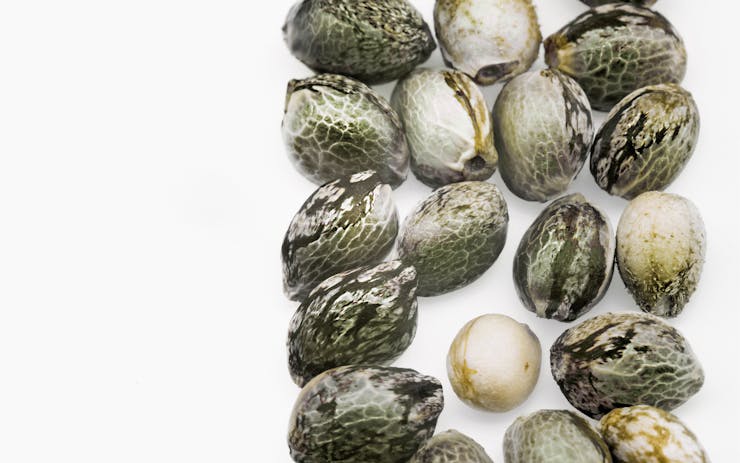In the past few years, autoflowering cannabis strains have become hugely popular in Europe, especially in countries with mild climates. What caused the widespread adoption, and what are the advantages and disadvantages of these “automatic” strains?
First, a quick review. Autoflowering cannabis strains differ from regular strains in one essential feature: They start to flower after seven to nine weeks of germinating the seeds. Unlike regular outdoor-grown strains, which mature between September and October, autoflowering plants do not depend on light intervals and thus allow for early harvests as well as multiple harvests within one season.
How is this possible? In the early nineties, Dutch breeders from the renowned Sensi Seeds seedbank were playing with the idea of combining genes from potent Cannabis sativa strains with the more rugged Cannabis ruderalis, but they failed to recognize the full potential. Their Ruderalis Indica and Ruderalis Skunk were the very first commercial autoflowering strains. Neither of the strains was ever stabilized — meaning about half the seeds failed to autoflower — and growers didn’t pay either much attention.
'I hadn’t heard about it for a good few years since then, until a friend of mine ordered some seeds from Holland three years ago and talked me into planting them.'
Things changed in 2002 with the Lowryder strain, bred by The Joint Doctor, a breeder currently based in the United Kingdom. Lowryder was the first stabilized, autoflowering strain that was commercially successful. At the same time, it drew laughs from regular consumers and experienced growers alike; the odor was feeble, the taste was poor, and the effects were mild. Still, a number of cannabis enthusiasts in Central European countries with a milder climate, such as Germany, Austria, the Czech Republic, and Slovakia, were impressed by the possibility of growing a stabilized strain that could be ready for harvest between June and August.
Most growers, however, remained skeptical. They predicted that disappointed gardeners would swiftly return to good old sativa, indica, and hybrid strains that flower according to light intervals and tend to mature between September and late October. The yields and quality of the cannabis, they argued, were incomparable.
As the years went by, two things began to change. First, more and more Dutch (and, later, also Spanish) seedbanks started to experiment with the genetics. Along the way, the aroma, taste, and, most significantly, the effects of newly produced autoflowering strains began to improve. Eventually they began to approach the quality of the best traditional strains. The second change came courtesy of Mother Nature: The changing climate brought dynamic autumns with plenty of rain and humidity, especially to central and northern Europe. Suddenly, even relatively early flowering strains were going moldy in the middle of September.
“I remember when we first smoked some autoflowering strain in 2003,” said a small-scale grower near the Czech capital of Prague, who asked to be identifies only as John. “It was pretty terrible — poor taste and almost no effects. I hadn’t heard about it for a good few years since then, until a friend of mine ordered some seeds from Holland three years ago and talked me into planting them.”
Because John had experienced past problems with both molds and thieves during September and October, he decided to give it a try. He put 10 seeds in the ground near the end of March. “In mid-June, I harvested lovely looking plants covered in resin. I dare say they looked pretty much like indoor-grown. It was a huge surprise for me and a perfect solution to my issues with weather and thieves.”
There are now tens of thousands of European growers sharing stories of similarly successful experiences. But autoflowering strains still have a few drawbacks. One plant usually yields no more than 15 to 50 grams, and some strains are still prone to mildew, even in July. Another downside, often criticized by old-school growers and breeders, is that it is not possible to produce your own seeds; nearly all of the autoflowering seeds available on the market are feminized.
Shop highly rated dispensaries near you
Showing you dispensaries nearWhich is to say: The big Dutch and Spanish seedbanks don’t sell regular autoflowering seeds (in order to maximize their profits, obviously). There are, however, small, local breeders with a different philosophy, such as Czech seedbank Top Tao Seeds.
“Jamaican civil rights activist Marcus Garvey once said ‘A people without the knowledge of their past history, origin and culture is like a tree without roots,’” a company founder explained to Legalizace magazine. “And I add: like a cannabis plant without seeds! Let’s get back to our roots.”






